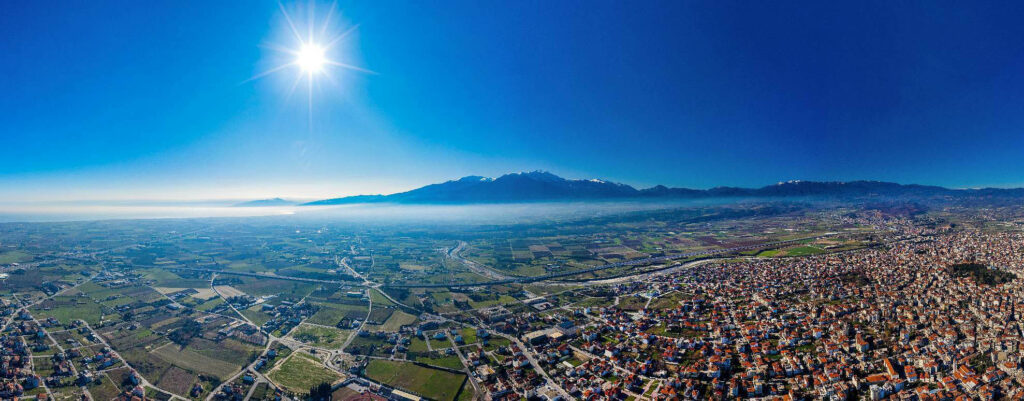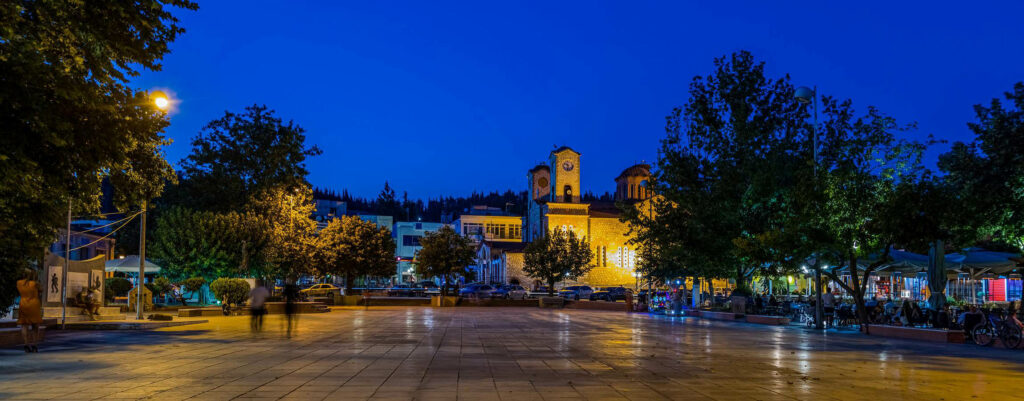Katerini

Katerini, the capital of the prefecture, is a comparatively new city, which gradually became an urban centre after the exchange of populations in 1923 and the settlement of refugees from Asia Minor and Thrace. In the early 19th century, it only had 100 houses, while in 1912, the period of liberation, the city numbered 8,000 people.
It developed radically in the postwar years, 1950-1960, and developed into a modern city, a dynamic centre of the administrative, economic, and tourist activity of Pieria.
Concerning the origin of its name, it is believed to come from the church of Agia Aikaterini built by refugees, who settled in the early 18th century, coming from the Peninsula of Sinai. The name Aikaterini is used to refer to the city in relevant documents and maps of the 19th and early 20th centuries. Archaeologists and travelers, however, mention that the name Katerini is an alteration of the ancient city Atira (Katira, Kateri), which was located in the area and was still inhabited in Christian times.
Katerini is situated at a strategic point, along the road axis Athens-Thessaloniki. Presently, it is a modern densely constructed city with all the infrastructures of a major urban center that satisfy all contemporary needs. The central axis of the city is the pedestrian street, Megalou Alexandrou, with many cafes and shops. Some of the sights worth visiting include the central park, and the Municipal Gardens, with its rich flora, its tall trees and recreation areas. From Katerini of the mid-war years with its low houses only very few old buildings are extant, like the restored mansion of Tsalopoulos. Another attraction is the Folklore Museum of Katerini with relics of the refugees (costumes, homeware, icons, etc.) especially from Pontos.
Elassona

Elassona retained its Homeric name, Olosson, almost intact. Homer refers to it as “White Olosson”, the town that took part in the Trojan expedition with 40 ships, headed by Polypoetes. It was initially inhabited by the Lapiths, but owes its great significance to the Perrhaebi. It was the largest town and capital of Perrhaebia. The Byzantine city was built upon the ruins of the ancient city and continued its historical course.
The insufficient flat land and the weak irrigation at the region of Elassona forced a large part of the population to turn to stock breeding. The festival of feta cheese, a key ingredient of the local food chain, takes place at the end of September in Elassona with a variety of related activities and demonstrations of traditional cheese-making. During the three-day event a scientific congress is organized and sampling stands can be found at the central square.